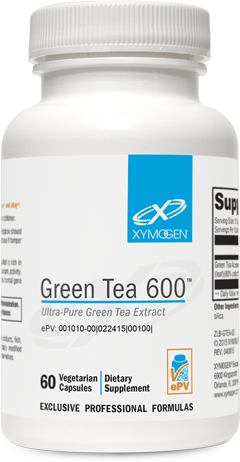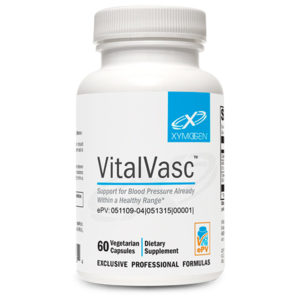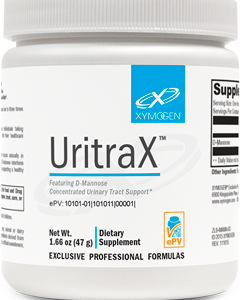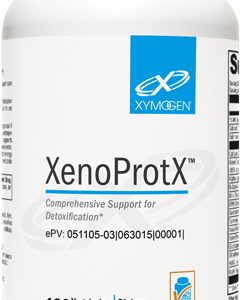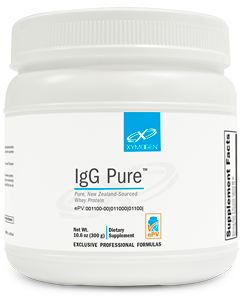Scientific Information/Data
The health benefits of the tea leaf Camellia sinensis are derived from a group of phytochemicals known as polyphenols. Polyphenols in fresh green tea leaves are present as a series of chemicals called catechins. The dominant and most biologically active among the catechins, (-)-epigallocatechin-3-gallate (EGCG), has been shown to induce expression of glutathione S-transferase, glutathione peroxidase, glutamate cysteine ligase, heme oxygenase-1, and other enzymes that protect a variety of cells, including cultured neurons, against oxidative stress-induced cell death. EGCG modulates the redox-sensitive transcription factor Nrf2, which plays a key role in activating detoxifying enzyme HO-1, as well as other phase II enzymes.[1-7]*
Green Tea 600™ Leaf Extract Green tea polyphenols protect erythrocytes (red blood cells) from oxidative stress.[8] In research studies, EGCG supported healthy insulin activity,[9] protected the pancreatic cells by reducing undesirable cytokines (e.g., interleukin-1 beta), and reduced interferon-gamma–induced nitric oxide production—an excess of which may cause free radical damage. Furthermore, it was found that the polyphenols triggered genes that inhibit activation of NF-kappaB[10] and reduced the level of messenger RNA for the hepatic gluconeogenic enzymes, which convert non-carbohydrate sources into glucose.[11] EGCG has been shown to support healthy immune function,[2] support the endocrine system,[4] and promote fat oxidation beyond what would be explained by its caffeine content.*[3]
Many of the wide range of health benefits derived from green tea are dose-dependent, and most Americans are not willing to consume the necessary 5-10 cups of tea a day to gain its advantages. Careful processing of the tea into an extract highly concentrates the key beneficial constituents. Each 600 mg capsule of Green Tea Extract contains 80% polyphenols, 60% catechins, and 30% EGCG. This is equivalent to approximately 10 cups of green tea. Each capsule contains 36-45 mg of caffeine per serving, roughly the equivalent of a can of cola and less than the 95-200 mg of caffeine in an 8-oz cup of brewed coffee.[12] Naturally occurring caffeine in green tea is believed to act synergistically with the polyphenols.*[13]
In summary, green tea’s benefits are based upon four actions: 1) it is a powerful antioxidant that protects against DNA damage; 2) it induces detoxifying enzymes; 3) it supports gene signaling, which helps regulate cellular growth, development, and apoptosis; and 4) it selectively improves the function of the intestinal bacterial flora.*[1,2,4-8,10,11]
*These statements have not been evaluated by the Food and Drug Administration. This product is not intended to diagnose, treat, cure, or prevent any disease.
References
- Weisburger JH, Chung FL. Mechanisms of chronic disease causation by nutritional factors and tobacco products and their prevention by tea polyphenols. Food Chem Toxicol. 2002 Aug;40(8):1145-54. [PMID: 12067577]
- Matsunaga K, Klien TW, Friedman H, et al. Legionella pneumophila replication in macrophages inhibited by selective immunomodulatory effects on cytokine formation by epigallocatechin gallate, a major form of tea catechins. Infect Immun. 2001 Jun;69(6):3947-53. [PMID: 11349063]
- Dulloo AG, Duret C, Rohrer D, et al. Efficacy of a green tea extract rich in catechin polyphenols and caffeine in increasing 24-h energy expenditure and fat oxidation in humans. Am J Clin Nutr. 1999 Dec;70(6):1040-45. [PMID: 10584049]
- Kao YH, Hiipakka RA, Liao S. Modulation of endocrine systems and food intake by green tea epigallocatechin gallate. Endocrinology. 2000 Mar;141(3):980-7. [PMID: 10698173]
- Wheeler DS, Catravas JD, Odoms K, et al. Epigallocatechin-3-gallate, a green tea-derived polyphenol, inhibits IL-1 beta-dependent proinflammatory signal transduction in cultured respiratory epithelial cells. J Nutr. 2004 May;134(5):1039-44. [PMID: 15113942]
- Dudka J, Jodynis-Liebert J, Korobowicz E, et al. Activity of NADPH-cytochrome P-450 reductase of the human heart, liver and lungs in the presence of (-)-epigallocatechin gallate, quercetin and resveratol: an in vitro study. Basic Clin Pharmacol Toxicol. 2005 Aug;97(2):74-9. [PMID: 15998352]
- Townsend PA, Scarabelli TM, Pasini E, et al. Epigallocatechin-3-gallate inhibits STAT-1 activation and protects cardiac myocytes from ischemia/reperfusion-induced apoptosis. FASEB J. 2004 Oct, 18(13):1621-3. [PMID: 15319365]
- Rizvi SI, Zaid MA, Anis R, et al. Protective role of tea catechins against oxidation-induced damage of type 2 diabetic erythrocytes. Clin Exp Pharmacol Physiol. 2005 Jan-Feb;32 (1-2):70-5. [PMID: 15730438]
- Anderson RA, Polansky MM. Tea enhances insulin activity. J Agric Food Chem. 2002 Nov;50(24):7182-6. [PMID: 12428980]
- Koyama Y, Abe K, Sano Y, et.al. Effects of green tea on gene expression of hepatic gluconeogenic enzymes in vivo. Planta Med. 2004 Nov;70(11):1100-2. [PMID: 15549673]
- Burzynski SR. Aging: gene silencing or gene activation? Med Hypotheses. 2005;64(1):201-8. [PMID: 15533642]
- Mayo Clinic Staff. Nutrition and healthy eating: Caffeine content for coffee, tea, soda and more. Mayo Clinic. http://www.mayoclinic.com/ health/caffeine/AN01211. Published October 1, 2011. Accessed August 16, 2012.
- Dulloo AG, Seydoux J, Girardier L, et al. Green tea and thermogenesis: interactions between catechin-polyphenols, caffeine and sympathetic activity. Int J Obes Relat Metab Disord. 2000 Feb;24 (2):252-8. [PMID: 10702779]


